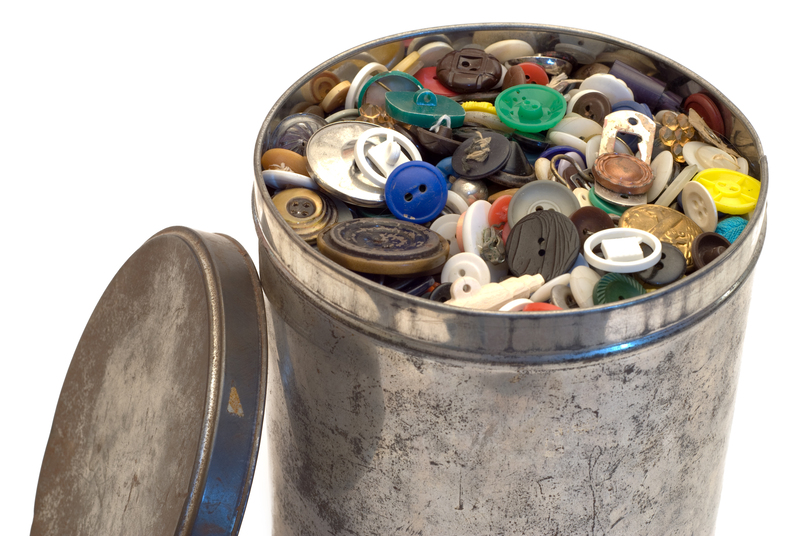Where to Take Your Unwanted Pots and Pans for Proper Disposal
Upgrading your kitchenware, decluttering your cabinets, or cleaning out a house often means ending up with unwanted pots and pans. But how should you responsibly dispose of these items? Simply throwing them in the trash is not the most eco-friendly choice. In this comprehensive guide, we'll cover where to take your unwanted pots and pans for proper disposal while respecting the environment and possibly helping others in need.

Understanding the Disposal Problem
Pots and pans are typically made from a variety of materials including stainless steel, aluminum, cast iron, copper, non-stick coatings, and sometimes plastic handles. Each material requires different disposal methods. Before tossing your cookware, consider the impact and the options for proper cookware disposal.
- Most curbside recycling programs do not accept cookware due to the combination of metals and non-metal parts.
- Improper disposal can contribute to landfill waste and environmental harm.
- Many pots and pans can be reused, donated, or recycled. Some can even be creatively repurposed.
Can Pots and Pans Be Recycled?
Many homeowners want to recycle old pots and pans, but kitchenware often contains mixed materials — making it a challenge for traditional recycling centers. Below, we'll explore the various options available.
1. Scrap Metal Recycling Facilities
Most metal pots and pans, including those with broken handles or missing lids, can be recycled at a scrap metal recycling facility. These centers accept items made from:
- Aluminum
- Stainless steel
- Copper
- Cast iron
Before visiting a scrap metal recycler:
- Remove any plastic, rubber, or wooden parts.
- Check if your cookware has a non-stick coating; these may or may not be accepted, depending on local guidelines.
- Many facilities pay you by weight—so it's a win-win!
Tip: Search online for "scrap metal recycling near me" or "where to recycle old pots and pans in [your city]" for local resources.
2. Municipal Recycling Drop-Off Centers
Some municipalities have special household item recycling drop-off centers where you can take old cookware. These facilities may separate the metals and recycle accordingly.
- Contact your city or county waste management department to see if they accept unwanted cookware.
- Some centers schedule special collection days for metal goods.
3. Appliance and Salvage Yards
Salvage yards and appliance recycling facilities typically accept a broad range of metals, including old pots and pans. These can be dropped off for recycling or, occasionally, even reused for repair or parts.
If you have other scrap metal items, bring them along to maximize your trip!
Alternative Ways to Get Rid of Old Pots and Pans
4. Donate Them to Charities or Thrift Stores
If your unwanted pots and pans are still usable, consider donating them to organizations such as:
- Goodwill
- Salvation Army
- Local churches, soup kitchens, or shelters
- Community centers
- Habitat for Humanity ReStores
Many nonprofit thrift stores and shelters welcome gently used kitchenware for resale or direct use. Always check with the donation center beforehand to ensure they accept cookware.
5. Offer Pots and Pans on Online Marketplaces
You may be surprised — someone out there might want your old cookware for a bargain price or even for free. Try listing items on:
- Facebook Marketplace
- Craigslist
- Freecycle
- Nextdoor
Be honest about the condition! "Used but perfectly functional stainless steel frying pan, free to a good home." This can keep your cookware in use and out of landfills.
6. Repurpose Old Cookware
Don't overlook the creative possibilities. Old pots and pans can be transformed into:
- Planters for your garden
- Drums or musical instruments for kids
- DIY craft projects
- Organizers or storage containers in garages or sheds
Repurposing is a fun, eco-friendly way to handle unwanted kitchen items.
Proper Disposal of Non-Stick and Teflon Pots and Pans
Non-stick cookware requires special attention due to chemical coatings such as Teflon. Most non-stick pans cannot be recycled with regular scrap metal. Here's what to do:
- Check with your local waste management for special instructions.
- Some non-stick pans can still be recycled at industrial scrap yards, but many recycling programs will not accept them.
- If you must dispose of them in the trash, remove as many non-metal parts as possible for minimal environmental impact.
Note: Newer non-stick pans may be PFOA-free, but old Teflon pans should be handled with care and never recycled in regular curbside bins.
Cookware Brands with Take-Back or Recycling Programs
Some cookware manufacturers are stepping up to promote sustainability. Look for brands that offer take-back recycling or responsible disposal for their old products. Examples include:
- GreenPan — occasionally offers details on recycling old pans.
- Calphalon — check for brand-specific recycling programs.
- T-fal — sometimes runs take-back initiatives in collaboration with retailers.
Contact the manufacturer's customer support or visit their website to ask about recycling programs.
Special Notes on Ceramics, Enamel, and Glass Cookware
Cookware made of ceramics, enameled cast iron, or glass (such as Pyrex) generally cannot be recycled in curbside bins or most scrap metal yards. Here's what you can do:
- Donate if in usable condition.
- Inquire at specialty recycling centers. Some do accept ceramic or glass dishware for downcycling.
- Use broken pieces in garden and mosaic art projects.
If you must dispose of broken or damaged items, wrap them securely before placing in the trash to prevent injury.
The Environmental Benefits of Responsible Kitchenware Disposal
Choosing proper disposal solutions for unwanted pots and pans significantly reduces waste, conserves natural resources, and helps communities in need. By recycling, reusing, or donating your old cookware, you:
- Reduce landfill waste: Metal takes decades or longer to degrade in landfills.
- Save raw materials: Recycling metals means less mining and manufacturing from scratch.
- Support local charities: Donating usable items directly helps families or food programs.
- Lower your carbon footprint: Repurposing and recycling require less energy than new production.
Every small action counts. By disposing of old pots and pans properly, you're part of a vital, positive change!
Step-by-Step Guide: How to Dispose of Unwanted Pots and Pans Properly
- Sort your cookware by type: metal, non-stick, ceramic, glass, or mixed materials.
- Check condition: If still in good shape, try donating or giving away first.
- Remove non-metal parts for easier recycling (handles, lids, screws, etc.).
- Contact local recycling or scrap metal centers to confirm what they accept.
- Research manufacturer or retailer recycling programs.
- Recycle or dispose of non-recyclable items as per your municipality's guidance.
Checklist: Where to Take Old Pots and Pans for Proper Disposal
- Scrap metal recyclers
- Municipal drop-off recycling centers
- Local donation centers and thrift shops
- Online giving or selling platforms
- Manufacturer recycling programs
- DIY repurposing projects
If these facilities aren't immediately available, store your unwanted cookware until the next local recycling event or community swap meet.

Frequently Asked Questions
Can I put pots and pans in my curbside recycling bin?
No. Most regular recycling bins don't accept cookware due to size, mixed materials, and coatings. Always take cookware to a scrap metal recycler or special drop-off facility.
What about rusty or damaged cookware? Can these be recycled?
As long as the pan is made mostly of metal (such as stainless steel or cast iron), rusty or broken pots and pans can still be recycled at a scrap metal facility. Non-stick or coated pans may require additional steps.
Are non-stick pots and pans dangerous to dispose of?
Old non-stick coatings can release hazardous compounds when overheated or incinerated. Do not put them in fire or regular recycling. Take them to a certified waste handler or landfill as directed by your local municipality.
Can I donate cookware with scratches or minor damage?
Charities may accept pots and pans with light wear, but make sure they are still functional and safe to use. Pans with flaking non-stick coating or deep cracks should not be donated but rather recycled or properly disposed of.
Conclusion: Handle Unwanted Pots and Pans Responsibly
Whether your pots and pans are old, non-stick, warped, or simply unwanted, there are numerous eco-friendly and charitable avenues for proper disposal. Giving kitchenware a second life through donation, recycling, repurposing, or responsible trash disposal benefits both your local community and the environment.
Remember: Before tossing your cookware in the garbage, review all your options for disposal. The effort you put into recycling or donating now has a lasting impact for the planet and those in need.
Looking for more tips on green living and sustainable kitchen habits? Explore further resources or contact your local recycling center for up-to-date information on how to dispose of unwanted household items responsibly.
